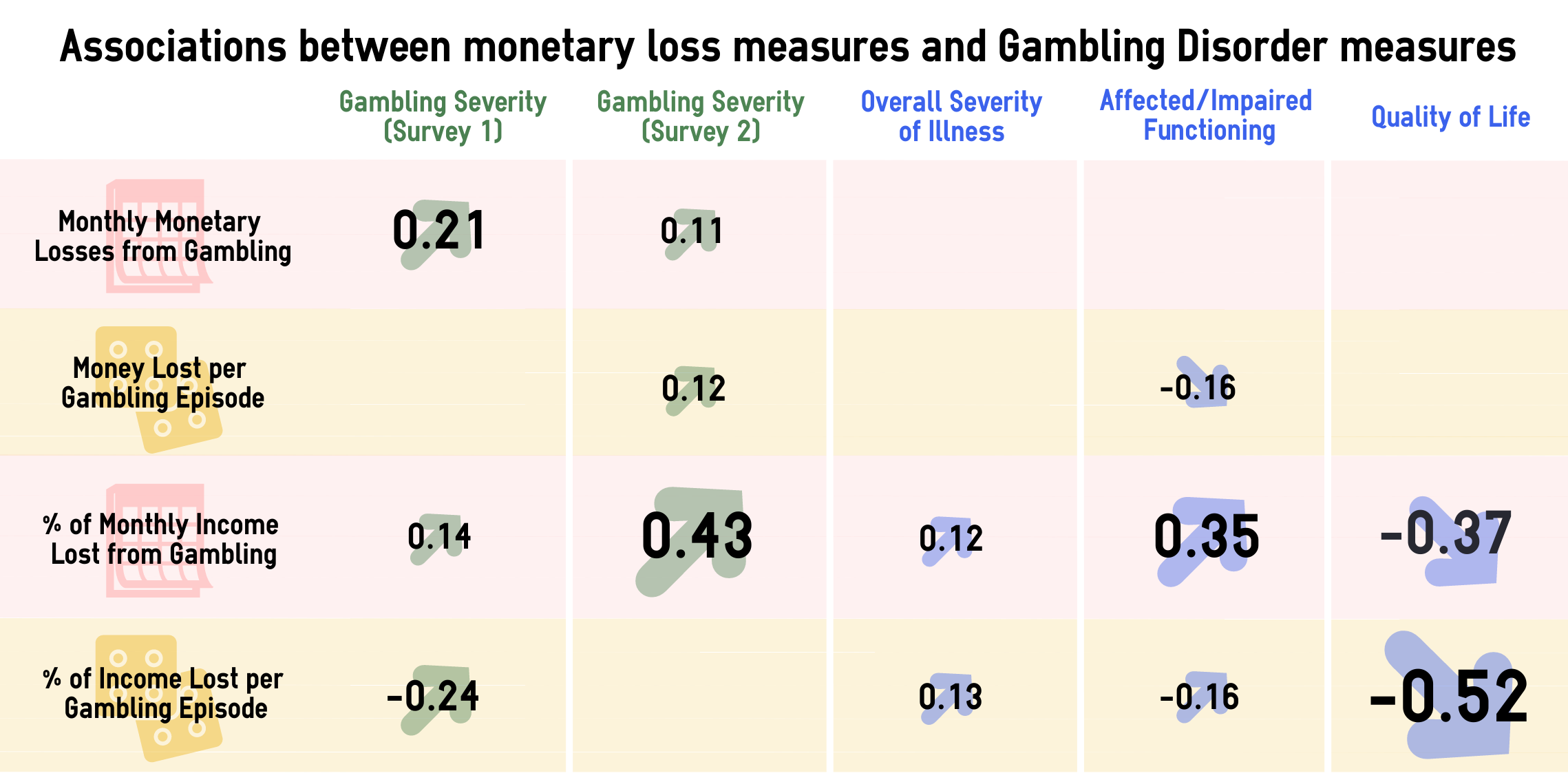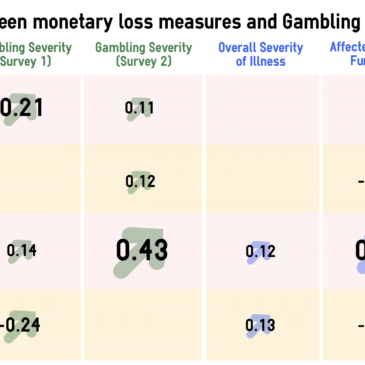Researchers and clinicians frequently use monetary loss to measure the severity of an individual’s Gambling Disorder. However, there is no consensus on which specific measure of monetary loss best reflects high gambling involvement and the psychosocial issues associated with Gambling Disorder, and different papers use a variety of measures as a result. This week, The WAGER reviews a study by Gustavo Medeiros and colleagues that investigates the relationships between measures of monetary loss and levels of both gambling severity and psychosocial functioning.
What was the research question?
Which measure of monetary loss is the best predictor of Gambling Disorder symptoms?
What did the researchers do?
The researchers recruited 436 American participants with Gambling Disorder who had participated in previous studies researching the disorder. Participants were evaluated with self-report questionnaires and clinician-administered surveys assessing annual income, gambling frequency, money lost during the past year from gambling, gambling severity (including associated thoughts, urges, and personal problems), and effect of gambling on overall functioning and quality of life. The researchers developed four independent variables to measure monetary loss:
- Average monthly monetary losses in gambling
- Average money lost per gambling episode1
- Average percentage of monthly income lost in gambling
- Percentage of income lost per gambling episode
They ran Spearman’s rank-order correlation tests to determine how these four variables correlated with gambling severity and overall functioning.
What did they find?
Percentage of monthly income lost from gambling and percentage of income lost per gambling episode were strongly correlated with gambling severity and overall functioning. For instance, the more of their income participants lost per gambling episode, the lower they rated their quality of life. The raw measures of money lost (per month and per gambling episode) were weakly correlated or uncorrelated with gambling severity and overall functioning. Percentage of monthly income lost from gambling showed the best performance among the four financial measures (see Figure 1).
 Figure. Each arrow represents one significant correlation. The value above each arrow is the correlation coefficient. Click image to enlarge.
Figure. Each arrow represents one significant correlation. The value above each arrow is the correlation coefficient. Click image to enlarge.
Why do these findings matter?
These findings are a step toward a standardized measure of monetary loss when conducting research on Gambling Disorder. The authors suggest future researchers use measures that consider losses relative to annual income, as these measures performed better than measures that did not consider income. They posit that depending on financial situation, a loss could have little or major impact on someone who gambles. In particular, measuring loss by percentage of monthly income accounts for both the effect of monetary resources and the recurrence of problematic gambling behavior over time.
Every study has limitations. What are the limitations in this study?
The researchers recruited participants from previous treatment studies. The results of this convenience sample may not reflect the behavior of a larger range of people with Gambling Disorder. Self-reporting methods assessing monetary loss could be inaccurate due to the sensitivity of the information provided and differing interpretations of questions.
For more information:
Do you think you or someone you know has a gambling problem? Visit the National Council on Problem Gambling for screening tools and resources. For additional resources, including gambling and self-help tools, visit The BASIS addiction resources page.
— Jamie Juviler
What do you think? Please use the comment link below to provide feedback on this article.
________________
1 “Gambling episode” is defined as a betting session without significant interruption by other activities (such as work or time at home).




